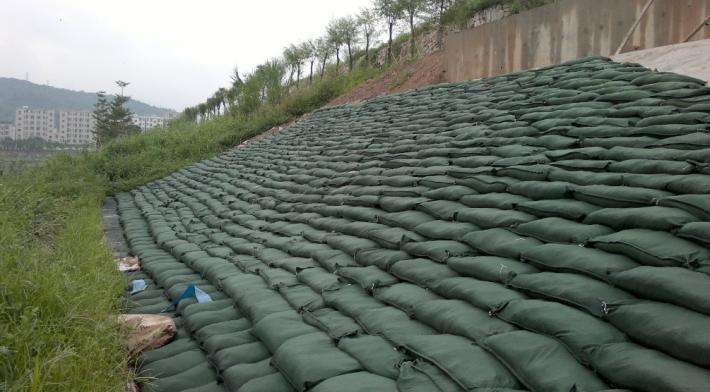Specifications and uses of composite drainage nets
RELEASE TIME :
2021-11-09 14:21
As the name suggests, the composite drainage network is a composite geotextile formed by cooling the finished geotextile base fabric and the three-dimensional drainage mesh core through a special process. The raw material of the net core is different from that of geotextile, but it is roughly the same as that of grass-proof cloth and drainage board. The geotextile here is a pointer-punched non-woven fabric, which is divided into short silk cloth and long silk cloth.

The composite drainage pipe network is generally divided into four heights, five heights, and six heights according to the core height, which are also called four thick, five thick, and six thick here. A square meter of 4 mm thick weighs 600 grams, 5 mm thick weighs about 750 grams, and 6 mm thick weighs about 1000 grams. Usually, according to the tensile strength of the net core, the specification of the drainage pipe network is designed and determined. The geotextiles on both sides are usually 200-200 grams according to the normal specifications. For example, the engineering design requires that the tensile force is not less than 10KN/M, so we should use a 6 mm thick mesh core. The total weight of the composite drainage mesh is the weight of the cloth on both sides plus the weight of the mesh core, which is equal to 1400 grams.
According to reports, as early as the 1970s and 1980s, Europe took the composite drainage pipe network as a new standard for drainage diversion in road tunnels, and it has been widely used. With the rapid development of China's economy, various transportation networks such as expressways, railways, and tunnels have been continuously constructed. Because of its high compressive and tensile strength, good anti-aging performance, convenient and fast transportation, simple construction, saving time and effort.
The drainage net is made of PP or PE plastic particles, which are extruded into a horizontal cylinder through a spiral funnel, and then gradually melted and plasticized at high temperature, then flow out through the mold, cooled in water, and then stretched. Generally, it is not used alone, and it is usually thermally compounded with the finished geotextile (non-woven fabric) base fabric during the stretching process, and processed into a composite drainage network. Because it is a three-dimensional structure, the middle is supported by vertical ribs, and the top and bottom are respectively a three-dimensional network composed of oblique ribs, which is also called a three-dimensional composite drainage network in the industry.
Previous Page
RELATED NEWS

What is the function of the waterproof board?
2022/11/14 15:47

Precautions for waterproof board construction
2022/11/03 11:58

What are the characteristics of the waterproof plate
2022/10/24 14:32

What is the purpose of the waterproof plate
2022/10/08 16:06


